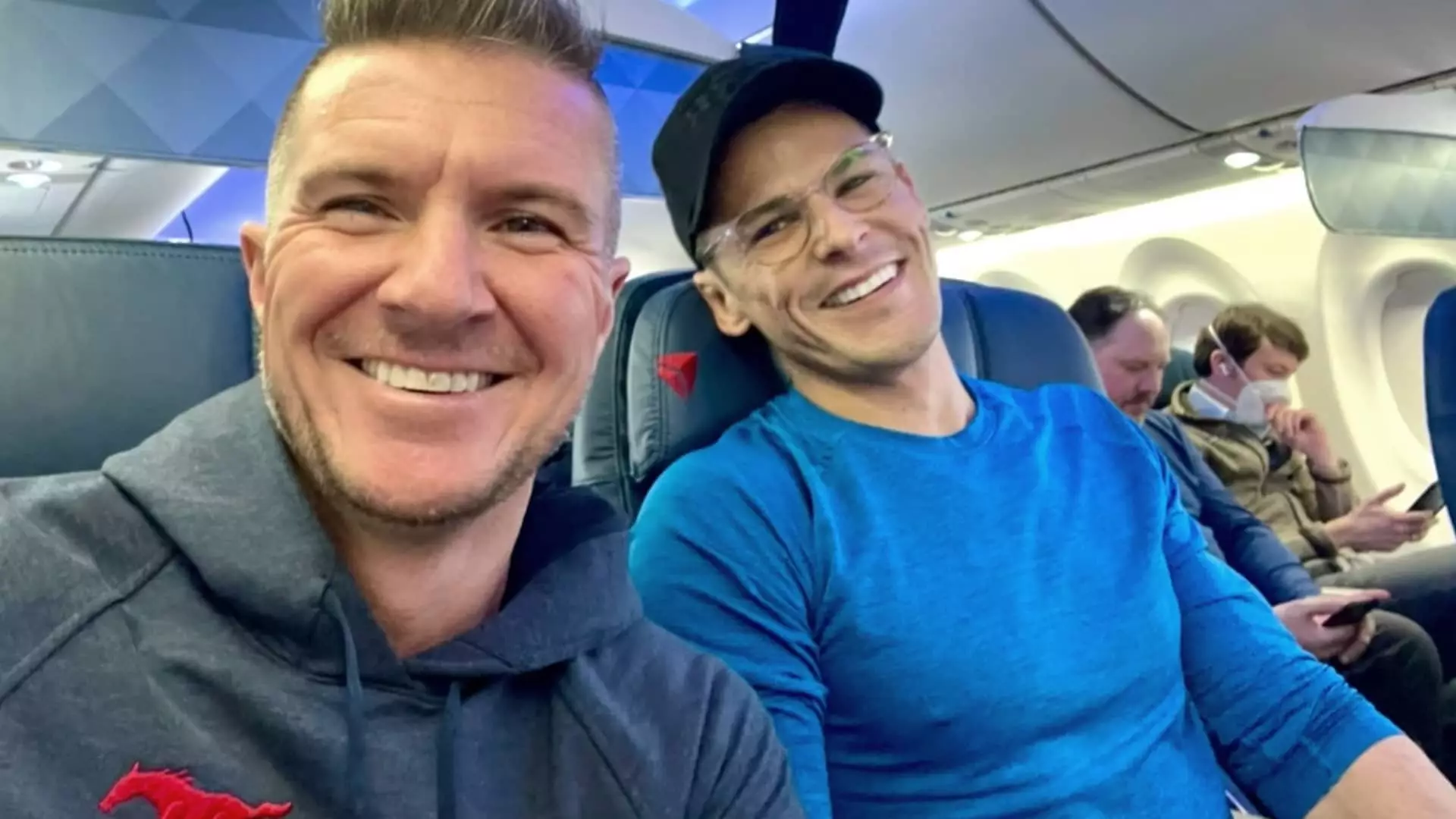Air travel can often feel like a microcosm of society, where the best and worst of human behavior is on display in a confined space. While many of us assume that proper behavior on planes should be inherent, the persistence of disruptive actions suggests otherwise. Campaigns aimed at promoting good plane manners underline the ongoing struggle to foster a civil flying environment. However, it may be eye-opening to consider how the prattling behaviors of our fellow travelers mirror challenges encountered in professional settings. In the book “How to Avoid Strangers on Airplanes: Survival Guide for the Frequent Business Traveler,” author Brandon Blewett unravels this connection and reveals intriguing insights into self-betterment inspired by the errant attitudes seen during flights.
Blewett, through his extensive travel experiences, meticulously cataloged a series of annoying habits shared by passengers. Instead of merely ranting about these behaviors—a move many might expect—he distilled his findings into six insightful concepts. These anecdotes serve as both cautionary tales and teachable moments in the quest for career advancement. For example, Blewett discusses the phenomenon of “Gate Lice,” wherein passengers ignore boarding zones and swarm the area, impeding the boarding process. It draws parallels to workplace dynamics, where colleagues may inadvertently hinder your progression due to their own ambitions.
To counter these obstructions, Blewett emphasizes the importance of adaptability—what he terms “the pivot.” He recounts his own journey from law school, plagued by the crushing realities of the Great Recession, to discovering new opportunities through a one-year MBA program. This act of pivoting from one career trajectory to another provided a gateway into roles better aligned with his long-term aspirations, encouraging readers to look for potential opportunities amid barriers.
Next on Blewett’s list is the unwelcome experience of “Airbus Assault,” which illustrates how passengers can inadvertently become a nuisance by wearing backpacks improperly. Such behavior can lead to bruises, both literal and metaphorical, as life—and careers—throw challenges our way. Blewett’s reflections on his earned “smacks” over time paint resilience as a requisite skill for both air travel and workplace navigation. His anecdotes navigate turbulent waters of disappointment and missed promotions, ultimately leading to an empowering realization: setbacks can reinforce fortitude, much like the persistence needed to endure an overloaded cabin.
The theme of resilience continues with Blewett’s observations of “Boeing Boardroom Meetings,” where fellow travelers engage in loud conference calls, seemingly immune to the flight’s communal environment. These moments underscore that confrontational personalities are ubiquitous, whether in the sky or within corporate corridors. Blewett posits that the response to such behaviors should revolve around “wit, grit, and humility,” along with the understanding that effective strategies often borrow from the wisdom displayed by public figures, such as Dolly Parton, who demonstrates how humor and grace can diffuse tension.
Beyond individual behaviors, Blewett introduces readers to the concept of “Bin Shoehorning,” a term for those indulging in a haphazard packing style within the overhead compartments. This behavior can be likened to forcibly pursuing career objectives that fail to align with one’s genuine interests, resulting in misfits that complicate overall progress. Reflecting on his own attempts to achieve partnership within a firm that was not a good fit, Blewett speaks to the necessity of recognizing when to let go of aspirations that fail to resonate with personal truth.
Assessing the social fabric onboard, Blewett confronts the notion of being a “good seat neighbor”—the way we interact and support each other can profoundly shape our journeys, both in the air and in professional settings. Beneficial connections can flourish when we cultivate a positive attitude and make genuine efforts to assist others, enhancing the communal environment.
Finally, Blewett addresses the infamous “Eager Exiter,” a traveler who leaps to their feet the moment the seatbelt sign extinguishes. This rushing attitude often leads to unintentional chaos, causing delays for everyone involved. Blewett cleverly equates this impatience to his own convoluted career path, highlighting how the journey may have been the most rewarding aspect all along. The narrative encourages us to embrace the process and enjoy the professional climb, much like navigating the complexities of air travel.
Through his unique lens, Blewett uses air travel’s discomforts and oddities not merely to criticize but rather as stepping stones toward understanding and growth. In doing so, he proves that the turbulence encountered in the air can serve as profound metaphors for achieving success on the ground.


Leave a Reply